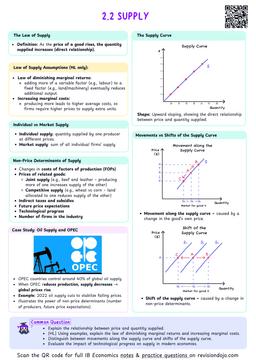- When markets operate competitively, the demand and supply determine the equilibrium price and quantity.
- This system in which the interactions of consumers and producers determine the prices through forces of demand and supply is referred to as the price mechanism.
The price mechanism is responsible for two functions in an economy:
- Resource allocation: assigning the factors of production to specific economic activities to efficiently produce goods and services.
- Rationing: the controlled distribution of the scarce resources, goods, and services.
Resource allocation
Resource allocation
Assigning available resources or factors of production to particular uses selected from various possible options.
The price mechanism affects the resource allocation within industries and countries:
- Producers sell only the goods (or services) and quantity of the goods that consumers are willing and able to buy.
- Consumers buy only the goods (or services) and quantity of the goods that the producers are willing and able to supply.
This equality in the buying and selling choices allocates resources and determines what is being produced and how much:
- Firms will only use the resources that consumers are willing and able to pay for.
- Through this mechanism, a free market economy answer the question what to produce? (and how much).
In a nutshell, prices function as signals and incentives that determine the resource allocation.
Signalling function of prices
Signalling function of prices
The capacity of prices, and changes in prices, to convey information to consumers and producers about the existence of shortages or surpluses in markets, achieving an efficient allocation of resources.
The signalling function of prices communicates important information to buyers and sellers:
- Excess demand (shortage) (too many buyers and not enough goods) leads to higher prices, signalling producers to increase supply.
- Excess supply (surplus) (too many goods and not enough buyers) causes lower prices, signalling producers to reduce supply.
The signalling function of prices:
- Helps consumers and producers make choices, guiding resources to where, and in the amount by which, they are needed most.
- Helps achieve an efficient use of resources in the economy.
Incentive function of prices
Incentive function of prices
The ability of prices, and changes in prices, to provide information to consumers and producers that encourages them to act in their own best interest.


